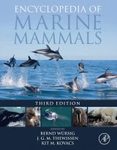By: John E Cooper(Author), Gordon Hull(Author), Louise Leakey(Foreword By), Emmanuel de Mérode(Foreword By)
631 pages, colour & b/w photos, b/w illustrations, tables
![Gorilla Pathology and Health Gorilla Pathology and Health]()
Click to have a closer look
About this book
Contents
Customer reviews
Biography
Related titles
About this book
Gorilla Pathology and Health: With a Catalogue of Preserved Materials consists of two cross-referenced parts. The first, the book itself, is a review of pathological changes and tissue responses in gorillas (Gorilla gorilla and G. beringei), with an emphasis on free-living animals, but also with reference to those in captivity. The comparative aspects are discussed, stressing the relevance of research to both gorillas and humans. What makes the publication truly unique, however, is the second part, a comprehensive descriptive catalogue of the location and nature of gorilla material in museums and scientific institutions throughout the world. This is of great consequence because free-living gorillas are strictly conserved with restricted access, so the location of a wealth of preserved tissues and other material that has been collected over the decades is a great benefit for research and study.
Gorilla Pathology and Health can, and should, be used to gain cardinal knowledge regarding the biology and pathology of this genus. The combination of book and catalogue in this extensive compilation makes it an invaluable tool for all those concerned with the health, welfare, and conservation of gorillas, one of our nearest living relatives.
Contents
Part I: Gorilla Pathology and Health
Chapter 1. The Genus Gorilla - Morphology, Anatomy and the Path to Pathology
Chapter 2. The Growth of Studies on Primate Pathology
Chapter 3. Infectious Disease and Host Responses
Chapter 4. Noninfectious Disease and Host Responses
Chapter 5. Methods of Investigation - Observation, Clinical Examination and Health Monitoring
Chapter 6. Methods of Investigation - Postmortem Examination
Chapter 7. Methods of Investigation - Sampling and Laboratory Tests
Chapter 8. Nonspecific Pathology
Chapter 9. Skin and Integument
Chapter 10. Respiratory and Cardiovascular Systems
Chapter 11. Alimentary Tract and Associated Organs
Chapter 12. Lymphoreticular and Haemopoietic Systems and Allergic Conditions
Chapter 13. Urinary and Reproductive Systems
Chapter 14. Musculoskeletal System
Chapter 15. Nervous System and Special Senses
Chapter 16. Endocrinological and Associated Conditions
Chapter 17. Field Studies in Pathology and Health Monitoring
Chapter 18. Legal Considerations
Chapter 19. Pathology, Health and Conservation - The Way Forward
Part II: A Catalogue of Preserved Materials
Introduction to the Catalogue
Catalogue of Preserved Gorilla Materials
Customer Reviews
Biography
Professor John Cooper has been associated with the Durrell Institute of Conservation and Ecology (DICE) at University of Kent, UK, since its inception and is now an honorary, visiting, member of its staff. He has lived and worked for nearly twenty years in Africa, Arabia and the Caribbean. In 2009 Professor Cooper returned to Britain after almost seven years as Professor of Veterinary Pathology at the University of the West Indies, Trinidad. He is primarily involved in teaching, diagnostic pathology, comparative medicine, and the veterinary care of wildlife and "exotic" species. With his wife, a lawyer, he teaches at universities in the UK, East Africa and elsewhere overseas and is active in forensic work and consultancies. Professor Cooper is an author/editor of many books and papers.
Gordon Hull is an amateur naturalist with a keen interest in primates and certain other mammals. He has specialised in the study of gorillas over many years, during which time he has amassed a great deal of technical and historical information about specimens in zoos, museums, and other institutions throughout the world.
By: John E Cooper(Author), Gordon Hull(Author), Louise Leakey(Foreword By), Emmanuel de Mérode(Foreword By)
631 pages, colour & b/w photos, b/w illustrations, tables


































